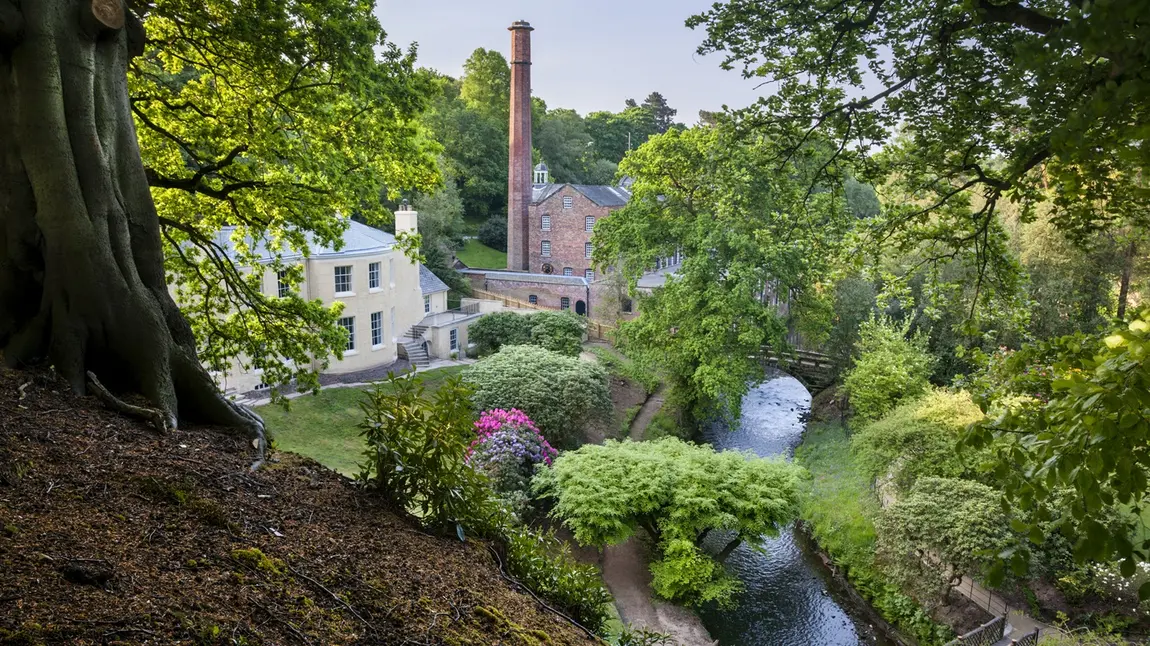Quarry Bank Project secures Heritage Lottery Fund support

Quarry Bank is the most complete surviving example of a designed industrial revolution community on the fringe of the first industrial city in the world – Manchester. The National Trust launched its own public appeal back in 2012 to transform the experience of visiting one of the country’s most significant industrial heritage sites and to ensure its long term conservation.
The main focus of the project is to bring the whole story of Quarry Bank back to life, sharing more of this special community which includes the mill, a farm, a village and the homes and workplaces of the owner, mill manager, workers and apprentices – a story of power, people and the birth of industry. Few, if any other sites of comparable significance are as complete or as untouched.
Today’s successful outcome means that many more people will make their own connections with Quarry Bank, from first impression to parting reflection. Working with volunteers and our local communities, National Trust will restore and open up key parts of the property, and work towards helping the local community have a greater sense of ownership of Quarry Bank in the future.
The Quarry Bank Project funding will support various plans for the site. These include the restoration and opening of a worker’s cottage and the village shop in Styal Village, restoring the Upper Garden to its former glory, (including the restoration of the 1830s curvilinear glasshouse), opening Quarry Bank House to the public and improving access around the site with a new network of paths and roads.
Rt Hon George Osborne, MP for Tatton, welcomed the news and said: “We are so lucky to have one of England’s most important industrial heritage sites on our doorstep. This grant from the Heritage Lottery Fund will open even more of the site to the public and preserve Cheshire’s history for future generations.”
John Darlington, National Trust Director of Region for the North West, said: “We are delighted that the HLF has approved our project. This is the news we’ve all been waiting for – it’s the green light for our ambitious vision and plans at Quarry Bank. We will at last be able to explore the complete story of a self-sufficient early Industrial Revolution community; of mill owners and workers, adults and children, industry and ingenuity, landscape and agriculture.”
The project will be implemented over a four year period, and will continue the remarkable work of those pioneers and local people who established the Quarry Bank Mill museum in the 1970s.
Sara Hilton, Head of Heritage Lottery Fund North West, said: “The Industrial Revolution is such a significant part of our country’s heritage and Quarry Bank offers an incredible insight into the very beginnings of this era. We’re delighted to help secure its future and the National Trust’s plans to finally tell the full story of the site – from the inner workings of the mill to the lives of the communities that grew up around it. HLF’s investment will also help the trust build on their already impressive learning and volunteering programme and offer fantastic skills and training opportunities for local people.”
Samuel Greg established the cotton mill on the banks of the River Bollin in 1784, making use of the readily available water supply to power the mill. Like many other such developments, when the mill was first built there was no community of any size on the site, which was chosen more for the availability of water power than for a workforce. The Gregs soon built housing to attract adult workers and established a village complete with Unitarian and Methodist chapels, a village school, a shop, allotments and a farm to provide food for the mill community. Uniquely, Quarry Bank today contains the complete range of buildings of a self-sufficient mill complex from the early Industrial Revolution.
Today, Quarry Bank is a focal point for the local area. Over 173,000 people visit the mill and other features each year and many more enjoy the network of paths around the wider estate. Quarry Bank is renowned for its learning programme, with over 30,000 school visitors a year with children coming from all over the North West and beyond.
The total cost of the project is £9.5m. Private donations are making a vital contribution to this target. To date the appeal has raised approximately £900,000 and we are continuing to fundraise for the balance.
Further information
For further information, images and interviews, please contact Deborah Smith National Trust Public Relations Consultant on 07770 324 938, email: Deborah.smith1@nationaltrust.org.uk.